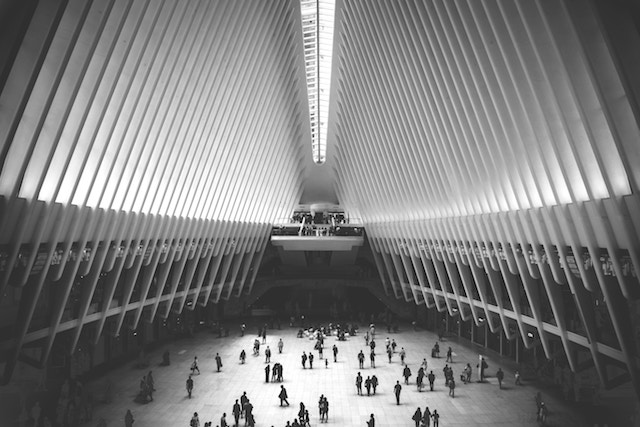As advances in technology and transportation continue to progress at a rapid clip, economies across the world have become increasingly bound through global networks of trade and immigration. This trend is none so clear as in gateway hubs. Known by some economists as “capitals of the world,” these cities boast commercial and financial links to other economically significant regions and serve as waypoints for international imports and foreign workers. Tokyo, London, and New York currently stand as the three most prominent examples of these internationally-rooted hubs, set apart by their high levels of immigration and cross-borders connections. However, not everyone approves of the increasing connectivity; contention over gateway cities like these has reached a frenetic pitch in the last few years due to a pervasive fear that the influx of newcomers will snatch away jobs and sour the economy for longstanding locals. However, recent economic research indicates that this protectionist view is faulty at best and downright harmful at most; immigration is a core driver of economic growth, and constricting entry will only lessen performance overall.
The idea that increased rates of immigration harms the economy and creates financial straits for locals stems from three major myths. Firstly, immigrants take jobs away from locals. Secondly, immigrants drag down wages for the labor pool as a whole. Lastly, immigrants leech resources from the communities in which they settle. All three of these points root in uncertain fear rather than sturdy economic fact. Let’s break each myth down individually.
Myth #1: Immigrants Steal Jobs
The reasoning behind this point is simple. In any community — regardless of whether it’s a gateway city or small town — there are only so many jobs available. Therefore, immigrants who set down roots and begin working must be taking jobs that locals could have otherwise claimed.
This logic seems reasonable enough— until you look at the data. A consensus study report published in 2017 by a leading group of economists found that “the long-term impact of immigration on the wages and employment of native-born workers overall is very small, and that any negative impacts are most likely to be found for prior immigrants or native-born high school dropouts.” The same study further notes that second-generation immigrants are often some of the most influential fiscal contributors in the U.S., contributing positively to the long-term health of the national economy. In short: all jobs are not equally likely to be taken by immigrant workers, and those employees are unlikely to take jobs from long-term locals.
Myth #2: Immigrants Lower Overall Wages
Again, the logic behind this belief is both straightforward and fundamentally incorrect. Immigration opponents believe that newcomers will settle for less pay that locals will, and therefore will drag down the competitive wage rate for everyone. However, recent research published in the Journal of Economic Geography indicates not only that this is not the case, but also that immigration diversity has a net positive impact on overall wage growth and productivity, particularly among high-earning workers. Moreover, increased diversity and its resulting productivity have even been found to increase the number of available high-ranking jobs for immigrants and locals alike.
Myth #3: Immigrants Leech Community Resources
Critics might say that immigrants claim jobs, supplies, and houses that locals could use – and technically be right. However, the picture they paint is one-sided to a misleading degree. When newcomers settle into the labor market, they take part in community life by buying groceries, paying rent, enjoying community entertainment, and paying taxes. By the very act of living in a community, they contribute to its growth — and provide considerable returns on whatever resources they do take.
For a moment, though, let’s put aside those facts and consider a city where no newcomers settle. Without immigration, a community is wholly dependent on the residents it already has to supply the workforce and economic contribution it needs to continue at its current rate of production. Growth beyond the status quo requires the birth rate to exceed the death rate — but when the former falls below the latter, economic atrophy sets in quickly. Japan is a perfect example of this phenomenon: as an immigration-unfriendly country, Japan faced economic deflation and worker shortages after its postwar growth boom ended in the 1990s. Now, the country has one of the oldest populations in the world — and few prospects for internally producing the workers it needs to lift itself back into a state of net positive economic growth.
In short, immigration is an all-around positive development for national economies. Incoming workers boost wages, prompt jobs, and stimulate national and international economies in ways that a static and longstanding population cannot. Communities need new and diverse workers to thrive; without them, local economies will eventually and inevitably fall into atrophy. Prominent gateway cities like New York, Miami, San Francisco, and Seattle offer a model of diversity that we should strive for and embrace in a new age of global connectivity — not reject out of baseless fear of change.







